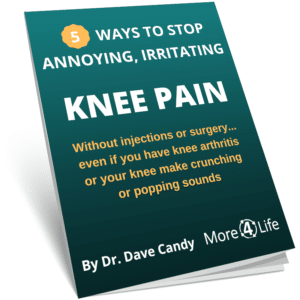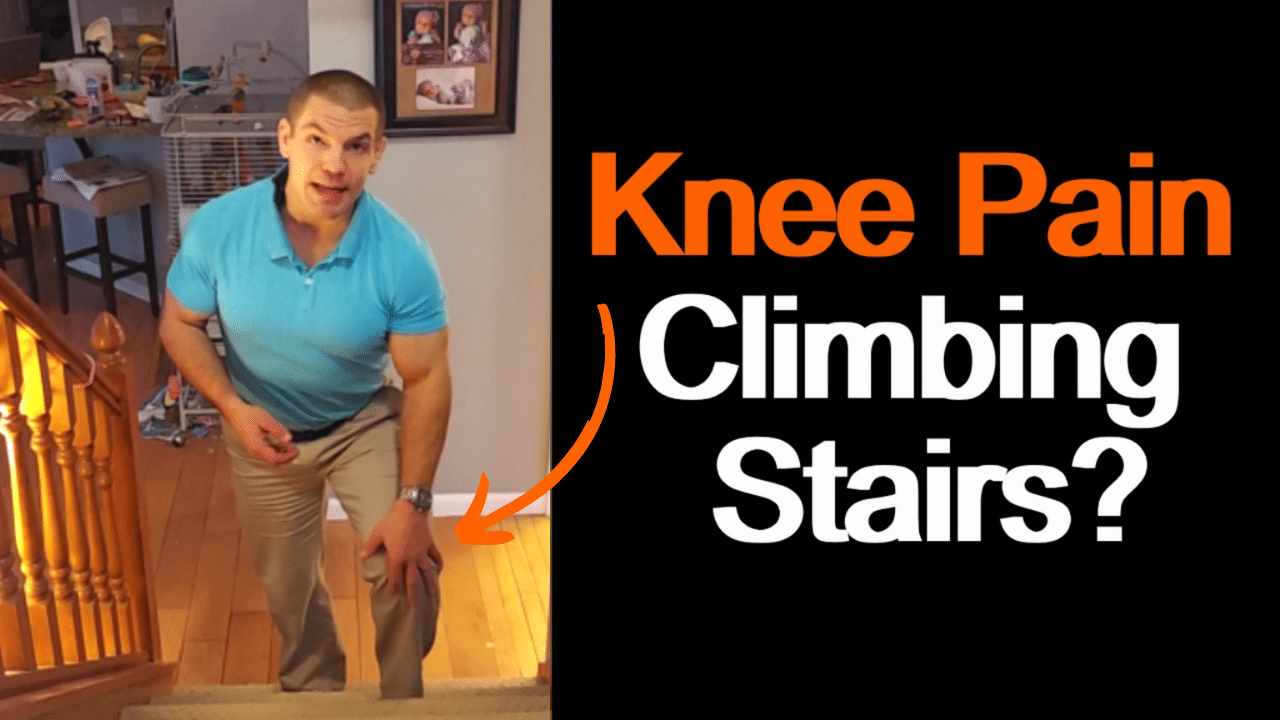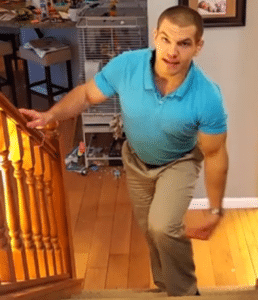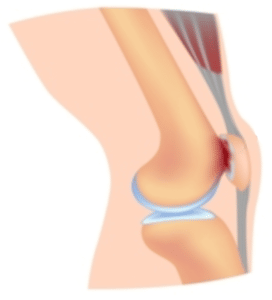Do You Get Knee Pain Climbing Stairs?
Watch the video to learn 2 easy tips that can help immediately relieve knee pain climbing stairs.

Why Is It Hard For My Knees To Climb Stairs?
There are a lot of different things that can cause knee pain climbing stairs, but generally there are three different broad categories:
Causes of knee pain climbing stairs:
- Pain inside the knee joint - i.e. knee arthritis or a meniscus tear.
- Patellofemoral joint pain - pain between the kneecap (patella) and the thigh bone (femur)
- Soft tissue pain - pain from muscles, tendons, or ligaments around the knee joint
How Do I Stop Knee Pain Climbing Stairs?
Pain inside the knee joint
What causes pain inside your knee joint when climbing stairs.
If you have knee arthritis or a meniscus tear, those types of problems are sensitive to compression.
While climbing stairs does cause compression between your joint surfaces, the bigger problem is when you have joint compression combined with rotation.
If you're twisting your thigh bone (femur) on the lower leg bone (tibia), it grinds the two joint surfaces together.
This can be particularly problematic if you've had knee cartilage loss.
So how do you prevent rotation between the two joint surfaces when climbing stairs?
Most of the rotation in your knee joint is controlled by your hip.
If your hip is weak, it causes your knee to go inwards and because your foot is planted on the stair.
In turn, that creates a relative twisting and side-bending of your knee joint.
That creates compression on the outer compartment of your knee joint and it also creates tension on the ligaments and tendons on the inside of the knee.
A really easy way to prevent knee pain when stairs is to focus on turning your knee out slightly to activate your hip muscles.
If you've ever done a clamshell exercise, it's kind of like doing that while standing up.
Now at first, it's going to feel like you're turning your knee WAY out.
If your norm is allowing your knee to buckle inwards, then keeping it in a neutral alignment with your kneees inline with your toes, it's going to feel like you're turning out excessively far.
So strengthening your hip does help prevent twisting your knee inward while climbing stairs.
What else can prevent your knee from twisting when climbing stairs?
If you have flat feet or tend to overpronate, wearing shoes that have good arch support and/or orthotics can be helpful.
Superfeet All-Purpose Support High Arch ...
$54.95 (as of April 19, 2024 17:30 GMT -05:00 - More infoProduct prices and availability are accurate as of the date/time indicated and are subject to change. Any price and availability information displayed on [relevant Amazon Site(s), as applicable] at the time of purchase will apply to the purchase of this product.)If you don't like wearing your shoes inside, have a dedicated pair of inside shoes. Even a pair of slip-on shoes with arch support such as Crocs is better than nothing.
Knee Pain in Soft Tissue
You have some tendons that run along the inside of the knee called your pes anserine tendons.
The pes anserine tendons come from 3 muscles on the inner thigh:
semitendinosis - one of your inner hamstring muscles
gracilis - a hip adductor muscle
sartorius - a muscle that runs diagonally across the front of the thigh to the inside of the knee.
If your knee twists inward while climbing stairs, it puts a stress on all those tendons where they wrap around the inner side of the knee.
Additionally your IT band that comes from the hip also crosses around the outside of the knee and into the front of the knee and it can create some abnormal stress or twisting on that IT band if you're twisting inwards.
Therefore, the same tip of turning the knee outwards slightly when climbing stairs can help knee pain on the inside or the outside of the knee if it's coming from soft tissues.
Patellofemoral Joint Pain
Patellofemoral joint pain is pain between the kneecap (patella) and the thigh bone (femur).
The patella should normally slide up and down in a groove on the femur.
If your quad muscles are too tight or you're using too much quadricep force to climb the stairs then you create more joint compression between the patella or the kneecap and the femur which is underneath. This can be especially painful if you've started to have some kneecap arthritis or chondromalacia patella.
How To Prevent Patellofemoral Compression When Climbing Stairs
To prevent excessive compression between your kneecap and your thigh bone, you want to use your quadricep muscles less.
You still need the same amount of force to climb stairs. However, you use a combination of your quadriceps as well as your glute muscles, particularly your gluteus maximus muscle.
When you go up the stairs, if you try to stay perfectly upright that uses a lot more quadricep force.
If you lean forward slightly when you're climbing up the stairs then that engages your glutes more.
Make climbing stairs more a motion of leaning forward and then pushing your hips underneath of your rather than making it a knee extension movement. By doing this, you'll use your quadriceps less and your gluteus maximus more.
Additional Tips to Relive Knee Pain
Now there are some other tips that can help out with climbing stairs.
Stretches To Relieve Knee Pain Climbing Stairs
If your quadriceps are too tight then it can be helpful to stretch those.
If your calves are too tight it prevents you from getting the adequate movement in your ankle that you need to get your knee over your toes. Therefore, stretching your calves can helpful.
Manual Therapies Knee Pain Climbing Stairs
Whether you have an internal joint problem or a soft tissue problem in your knee, some types of manual therapies can help. That may include manual joint mobilizations to realign the joint and get it moving properly.
Sometimes that makes a pretty quick difference in the pain levels.
Additionally if you've got quad muscles that are too tight and are causing compression on the kneecap, hands-on treatment to get the thigh muscles to relax may also help.
That reduces the amount of compression force between the kneecap and the thigh bone.
Need Help For Knee Pain Climbing Stairs?
If you'd like to find out how working with one of our physical therapists can help you be able to climb stairs without knee pain, tap the button below to request an appointment.
Here are some other posts you might enjoy:
6 Tips To Stop Hip Pain Climbing Stairs
How To Stand Up From Sitting Without Knee Pain







